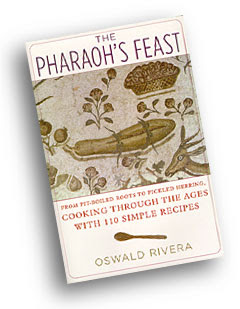
(photo credit: Federico Delvai)
In this month’s issue of Vanity Fair there is an interview with Gisele Bundchen (who is on the cover), a Brazilian supermodel well known in the fashion industry. Ms. Bundchen, aside from being a top fashion model, champions such worthy causes as AIDS awareness and preservation of the environment. And this is all to her credit. The interview denotes how she became a fashion model, her demanding work schedule, and how she maintains her equilibrium. The interview makes note of her passion for the martial arts, particularly, Kung-Fu. It states that she has taken up the art with a vengeance, how she practices constantly, and “there’s no day off.” It mentions she even trains Thanksgiving Day and New Year’s Day.

As a practitioner of Shaolin Kung-Fu for some 35+ years, I can understand the fascination, especially among those of us with an artistic bent. In our school, The Chinese Kung-Fu Wu-Su Association, numerous artists study with us. By that I mean actors, musicians, performers, dancers and, yes, even models. We’ve also had stunt-men and stunt-women join our ranks. What I’ve discovered is that the martial arts, because of its intense physical and mental concentration is a viable training tool for those in the arts. It keeps one in shape, and keeps one balanced. The aerobic training methods we use in our school is perfect for anyone—and not just a performer—to keep their well being.
When our school began back in 1967, Kung-Fu was just about unknown in the Continental U.S. There were Karate schools and Judo dojos but this thing, Kung-Fu, was considered something somewhat esoteric. It wasn’t until the Bruce Lee craze in the ’70s that it started coming into its own. In fact, my first exposure to it as a teenager was in the old Green Hornet TV series in which a young Bruce Lee portrayed Cato, the Green Hornet’s sidekick, and who was adept at “Gung Fu”—whatever that was. I didn’t get into training until I came back from Vietnam and was looking for a Karate school to supplement the training I had in the Marine Corps. I kind of fell into it. I came to the school, liked what I saw, and started taking classes. At that time we didn’t have many “artistic types” taking lessons. Admittedly, the school was geared toward those from a certain urban environment who just wanted to learn how to fight. Thankfully, that mindset has changed over the years so that today, apart from the usual self-defense, we also teach breathing, concentration and meditative techniques in order to insure maximum well-being, both externally and internally. And those in the performing arts find this beneficial, as witness the rigorous training of Ms. Bundchen.
Don’t get me wrong. You don’t have to be a supermodel to acquire the bug. Anyone in relatively good health can pursue whatever martial arts they desire for whatever purpose they desire (hopefully to improve themselves). That’s the beauty of martial arts, be it Kung-Fu, Karate, Jiu-Jitsu, Judo, Capoeira, Tae Kwon Do, and even boxing: the only person you’re competing against is yourself. I’ve discovered that if you take your time at it, maintain good eating habits and a healthy lifestyle, the rewards will be enormous.
Ms. Bundchen (or Mrs. Tom Brady), in her interview, talks about maintaining that healthy outlook, especially in terms of diet and nutrition. She reveals that, what works for her, is to have several small meals a day, rather than having two or three heavy meals daily. Even if you only have one big meal a day, the body has a tendency to store fat, so it’s best to regulate your caloric intake with small portions regularly. Of course, it does take discipline to maintain any kind of dietary regimen (ask anyone who’s ever dieted). Again, Kung-Fu, and the martial arts in general, instill this discipline. Figure it this way: just keep yourself active, even if its taking daily brisk walks.
Following this health kick, below is a simple salad recipe that is nutritious and beneficial. Usually my recipes run the gamut, from steamed to deep-fried. My cultural heritage is such that it embodies all methods of cooking, some more healthier than others. Like all else, one has to learn how to pick and choose from what is given on your plate. I like to think that most of us choose the healthier alternative—although once in a blue moon it’s just impossible to resist that chocolate sundae or blueberry cheesecake. A treat, now and then, doesn’t hurt. But, again, only as a treat.
The recipe is from my first cookbook, Puerto Rican Cuisine in America (Avalon Books).
TOMATO-PEPPER SALAD
(Ensalada de Tomate y Pimiento)
3 tablespoons extra virgin olive oil
1 medium green bell pepper, cored, seeded and cut into 1/4-inch strips
1 medium red bell pepper, cored, seeded and cut into 1/4-inch strips
1 clove garlic, chopped
2 large ripe tomatoes, cut into slender wedges
1/4 cup black pitted olives, sliced in half
1/4 teaspoon fresh or dried oregano
2 tablespoons fresh chopped parsley
1. Heat oil in a large skillet and add bell peppers and garlic. Stir-fry over medium heat for 3-4 minutes.
2. Add tomatoes and saute 3 minutes.
3. Stir in olives and oregano. Cook over low heat for 2 minutes more.
4. Sprinkle with parsley and served.
Yield: 4 to 6 servings.
Friends, that’s it for now and, please let me know what you think. I would especially like to hear from those who have had personal experience with the issues I’m covering. So all you martial artists out there, and cooks and chefs, and personal trainers, or anyone who has anything to say, be it tips, praise or critique, just drop me an e-mail at mroswaldrivera@gmail.com All comments are welcomed.
And (as they use to say in the old Bob and Ray Show), hang by your thumbs and write if you get work.


![Reblog this post [with Zemanta]](https://img.zemanta.com/reblog_e.png?x-id=3ae3f684-bede-442d-89f2-097db4646065)


![Reblog this post [with Zemanta]](https://img.zemanta.com/reblog_e.png?x-id=ba0e5310-1631-4921-9b19-77e9cdef97ff)

![Reblog this post [with Zemanta]](https://img.zemanta.com/reblog_e.png?x-id=0c3be4c3-fd59-4082-b2be-0cefd3828553)
![Reblog this post [with Zemanta]](https://img.zemanta.com/reblog_e.png?x-id=a02fdb71-fd22-4656-9d36-94aaff3f33ba)
